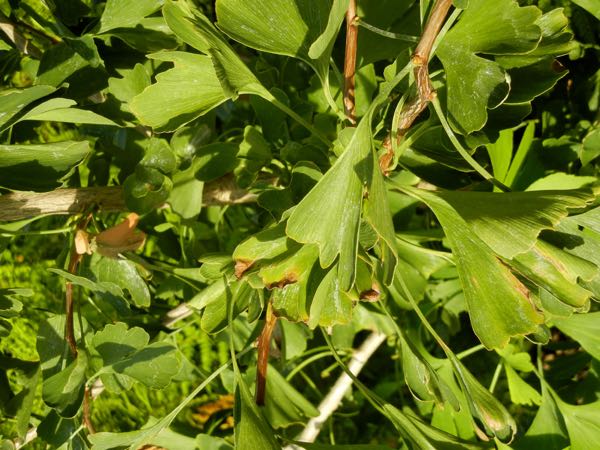Ginkgoaceae: Exploring the Enigmatic Family of Ancient Trees
The Ginkgoaceae family encompasses a group of extraordinary plants that have captivated scientists, horticulturalists, and nature enthusiasts alike. Within this family, the most famous representative is Ginkgo biloba, the renowned “living fossil” tree with a fascinating history and remarkable characteristics. Delving into the world of Ginkgoaceae allows us to unravel the mysteries surrounding these ancient trees and appreciate their unique contributions to our natural heritage. Ginkgoaceae is also known as the Ginkgo family. It is a family of gymnosperms, which are plants that produce seeds without flowers.
Origin and Evolution: A Journey Through Time
The Ginkgoaceae family traces its origins back millions of years, to a time when dinosaurs roamed the Earth. Fossil records indicate that Ginkgoaceae species were once widespread, with a diverse range of forms and sizes. However, over time, the family experienced a decline, and today, Ginkgo biloba stands as the sole surviving member of this remarkable lineage.
Ginkgoaceae is believed to have originated in what is now known as China, where Ginkgo biloba can still be found growing in the wild. The species’ resilience and ability to adapt to changing environmental conditions have allowed it to survive and thrive for millions of years, earning it the status of a “living fossil.”
Distinctive Features: An Ancient Tree Like No Other
Ginkgoaceae species possess several distinguishing characteristics that set them apart from other plant families. Here are some notable features:
- Fan-Shaped Leaves: Ginkgoaceae trees, including Ginkgo biloba, exhibit leaves that are fan-shaped, with veins radiating outwards or forking. The leaves are typically notched or lobed, providing a unique aesthetic appeal.
- Deciduous Nature: Ginkgoaceae trees are deciduous, shedding their leaves during the autumn season. This process creates a stunning display of vibrant colors as the leaves turn into shades of yellow, gold, and sometimes even orange.
- Dioecious Reproduction: Similar to Ginkgo biloba, most Ginkgoaceae species are dioecious, meaning individual trees are either male or female. Male trees produce small pollen cones, while female trees bear ovules that, when fertilized, develop into seeds.
- Resilience: Ginkgoaceae trees exhibit remarkable resilience, enabling them to thrive in various environments. They can tolerate urban pollution, harsh climates, and even moderate drought conditions.
Cultural Significance: Revered and Celebrated
Throughout history, Ginkgoaceae trees have held great cultural significance in many regions. Ginkgo biloba, in particular, has been revered and celebrated for centuries. Its association with longevity, resilience, and beauty has made it a symbol of hope, strength, and vitality in various cultures.
In China, Ginkgo biloba is considered a sacred tree and is often planted near temples and in sacred gardens. Its leaves and seeds have been used in traditional medicine for their potential health benefits, contributing to its revered status.
In contemporary society, Ginkgo biloba has gained popularity as a dietary supplement. Its extracts are marketed for their potential cognitive benefits and as a natural support for various health conditions. However, it’s essential to consult with healthcare professionals before incorporating any new supplements into one’s routine.
Conservation Efforts: Preserving Ancient Heritage
Given their ancient lineage and ecological significance, Ginkgoaceae trees, particularly Ginkgo biloba, deserve our attention and conservation efforts. While Ginkgo biloba has been successfully cultivated and reintroduced in many parts of the world, its wild populations remain limited.
Conservation organizations and botanic gardens around the globe are actively involved in preserving Ginkgoaceae species. Through seed banking, propagation, and habitat restoration initiatives, these efforts aim to protect and safeguard the genetic diversity of these remarkable trees for future generations.
Final Thoughts: Guardians of Ancient Wisdom
Ginkgoaceae stands as a testament to the endurance and resilience of life on Earth. As we explore the family’s rich history, distinctive features, and cultural significance, we gain a deeper appreciation for the importance of preserving these ancient trees. By safeguarding Ginkgoaceae species, we not only protect the genetic heritage of our planet but also connect with the wisdom and beauty that have survived the test of time. Let us continue to celebrate and cherish these enigmatic guardians of ancient wisdom, the Ginkgoaceae family.
The genera in the Ginkgoaceae include:
Pterophyllus
Salisburia

